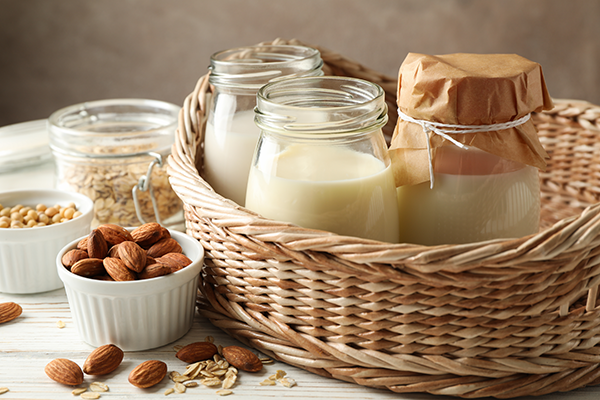
Plant Milk At Home? Why And How?
Share

Plant milk is an excellent substitute for regular dairy milk. Not only is it good for the environment, but also provides an alternative for people who have dietary restrictions or do not like the taste of dairy. Although there are many types of plant milk, we will be talking about almonds, oats, and soy in this article! Read on till the end to find out how to make these three plant milk at home.
Health Benefits
Almond Milk

Almond milk is nutritious yet low in calories. If you drink it unsweetened and in its original flavour, it is low in sugar level. It is also high in vitamin E and D. Store-bought almond milk is also a good source of calcium. Do note that store bought almond milk has higher calcium as they are artificially enriched by manufacturers.
Oat Milk

Oat milk contains zero cholesterol; consuming the milk regularly may lower the cholesterol level (LDL) in the blood. Oat milk has a high level of carbohydrates due to being rich in fibre, making it perfect in giving you the energy to last throughout the day. It is also high in vitamins (B1) and minerals, such as manganese, iron, and magnesium amongst others.
Soy milk

Amongst plant milk, soy milk has the closest nutritional profile to cow’s milk. Compared to almond and oat milk, soy milk has the highest amount of protein. The protein can help in supporting healthy muscles and organs. Soy milk is lactose and cholesterol free and easily digestible. It is also rich in omega-3 fatty acids, which has been linked to reducing the risk of dementia and Alzheimer’s disease.
Environmental Benefits

Although there are questions raised on the eco-friendliness of plant milk (such as the productions of almonds taking up a large amount of water), the production of plant milk is still more environmentally friendly as compared to cow’s milk. Plant milk production requires less water and land and produces lesser greenhouse gas emissions.
Precautions

Although plant milk has many benefits, children below the age of 1 should not be consuming plant milk as a replacement for breastmilk or formula. Plant milk nutrients are unsuitable for children below the age of 1. Children over the age of 1, however, can drink plant-based milk, such as fortified soy milk. However, do consult your child’s paediatrician to confirm that your child is alright consuming the plant milk.
Another precaution is to take note to drink unsweetened and non-flavoured plant milk. Sweetened and flavoured plant milk has a high sugar content, which is unhealthy, especially if you are looking to drink plant milk in the long run. You may consider healthier options such as honey or agave.
Psst: It is more economical and environmentally friendly to make your plant milk, so go ahead and try out the plant milk recipes below! To go a mile further in being eco-friendly, purchase your groceries at zero-waste shops.
Almond Milk

Ingredients
- Almonds
- Filtered water
- Agave Syrup/ Honey (Optional)
Steps:
- Soak the almonds with water overnight.
- Throw away the overnight water and rinse the almonds.
- Put in the almonds and water into the juicer (1:1 ratio).
- Add in agave syrup or honey to taste if you would like the milk to be sweet.
1 cup of almonds yields 1 cup of almond milk. Adjust the recipe according to how much milk you would like!
Oat Milk

Ingredients
- Organic rolled oats
- Filtered water
- Agave Syrup/ Honey (Optional)
Steps:
- Soak the rolled oats with water for 2 - 4 hours.
- Throw away any leftover water in the jar and replace the oats water.
- Put the oats and water into the juicer (1:1 ratio).
- Add in agave syrup or honey to taste if you would like the milk to be sweet.
1 cup of oats yields 1 cup of almond milk. Adjust the recipe according to how much milk you would like!
Soy milk

Ingredients
- Organic dry soybeans
- Water
- Agave Syrup/Honey (Optional)
- Salt (Optional)
Steps:
- Soak the raw soybeans with water overnight. The soybeans should be 2-3 times larger than before.
- Throw away the overnight water and rinse the soybeans with filtered water.
- Put the soybeans and water into the juicer (1:1 ratio). If you would like your soy milk to be thinner, add more water.
- Boil the soy milk for 2-3 minutes to ensure that it is safe to consume since the soybeans were raw.
- Add in agave syrup or honey to taste if you would like the milk to be sweet.
- Add in some salt if you would like the soy milk to be savoury.
1 cup of soy yields 1 cup of soy milk. Adjust the recipe according to how much milk you would like!
---
Need some ideas for juice recipes? Check out our Hurom recipes here: https://huromsingapore.com/pages/juice-recipes-health
